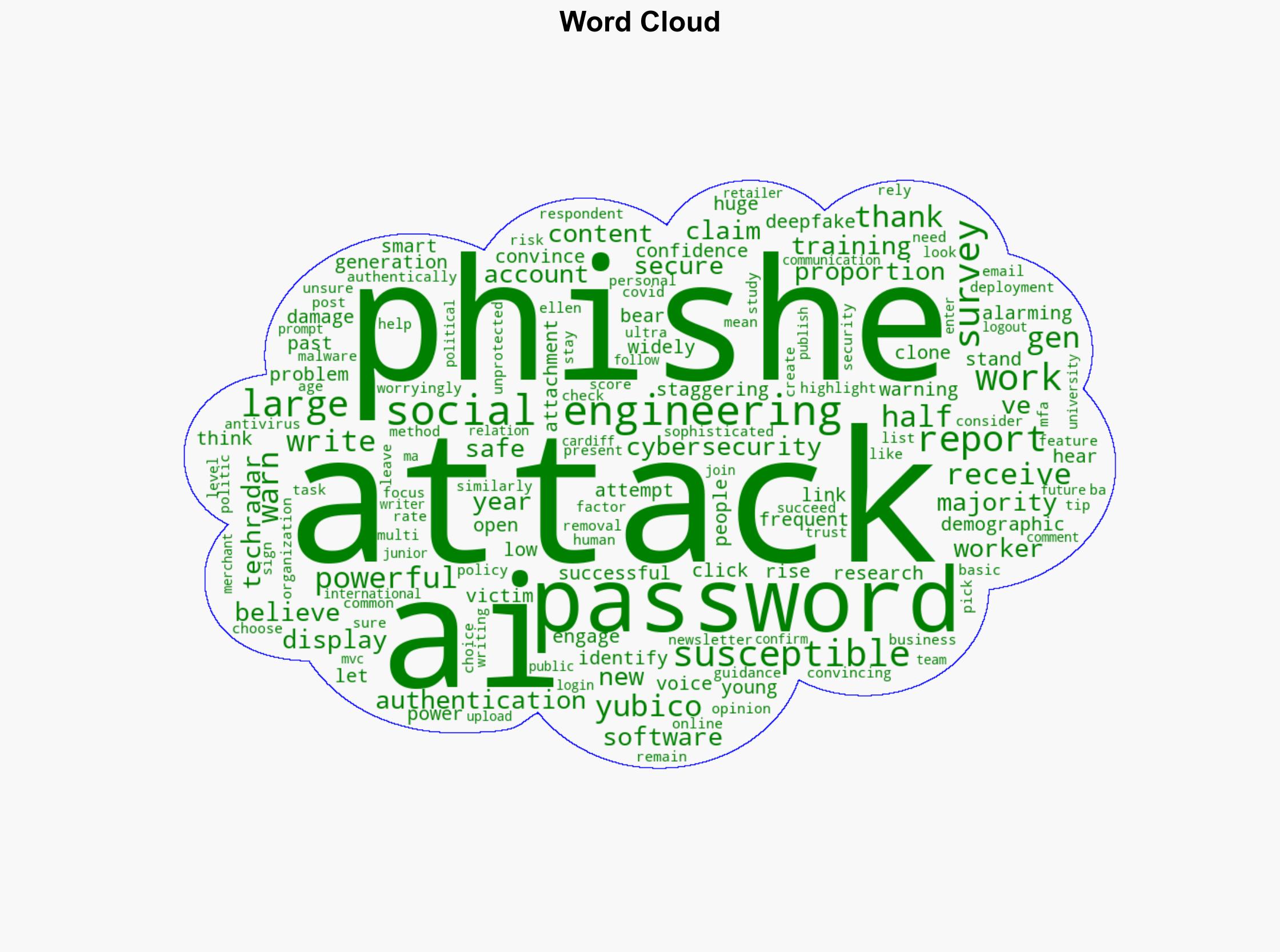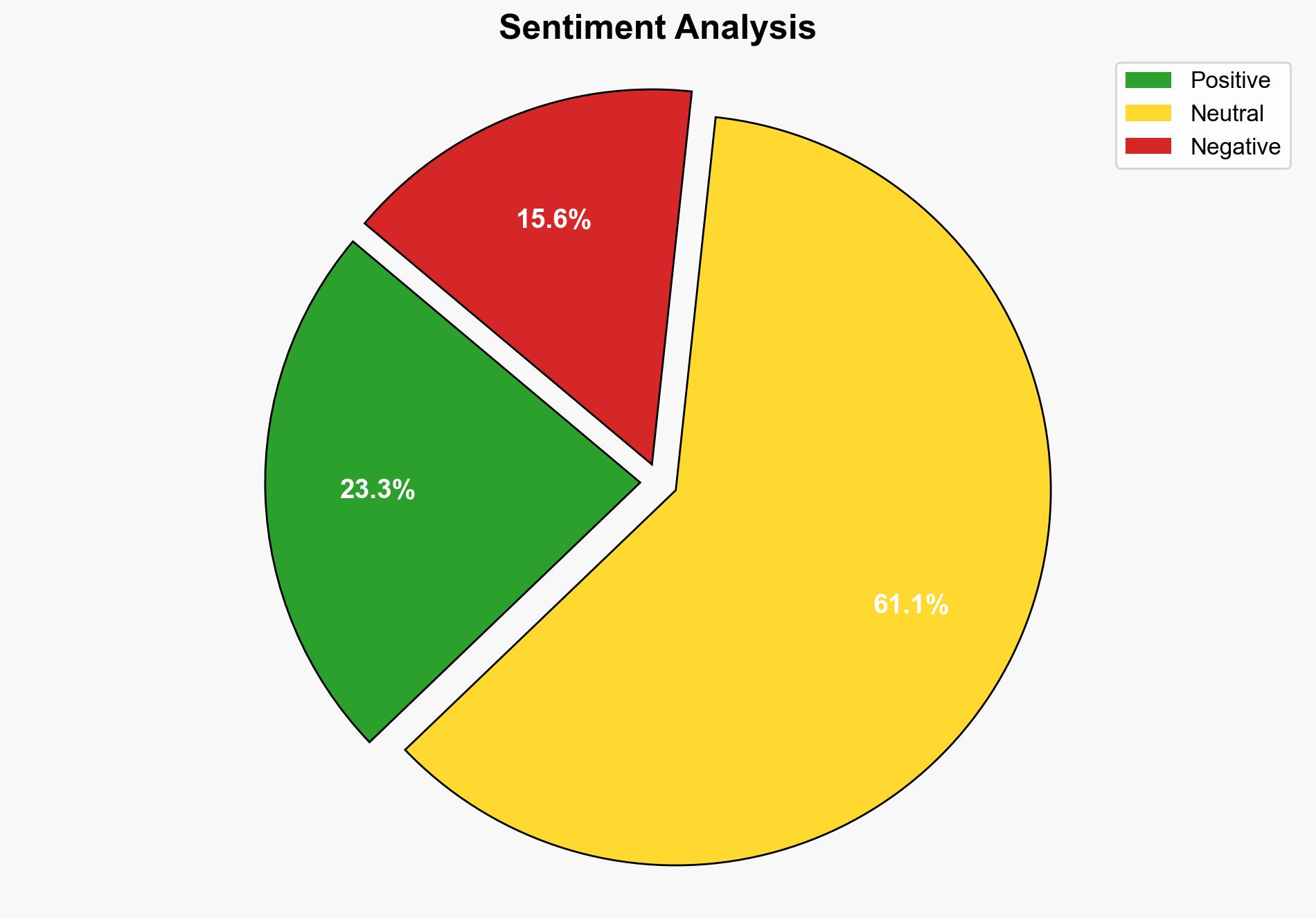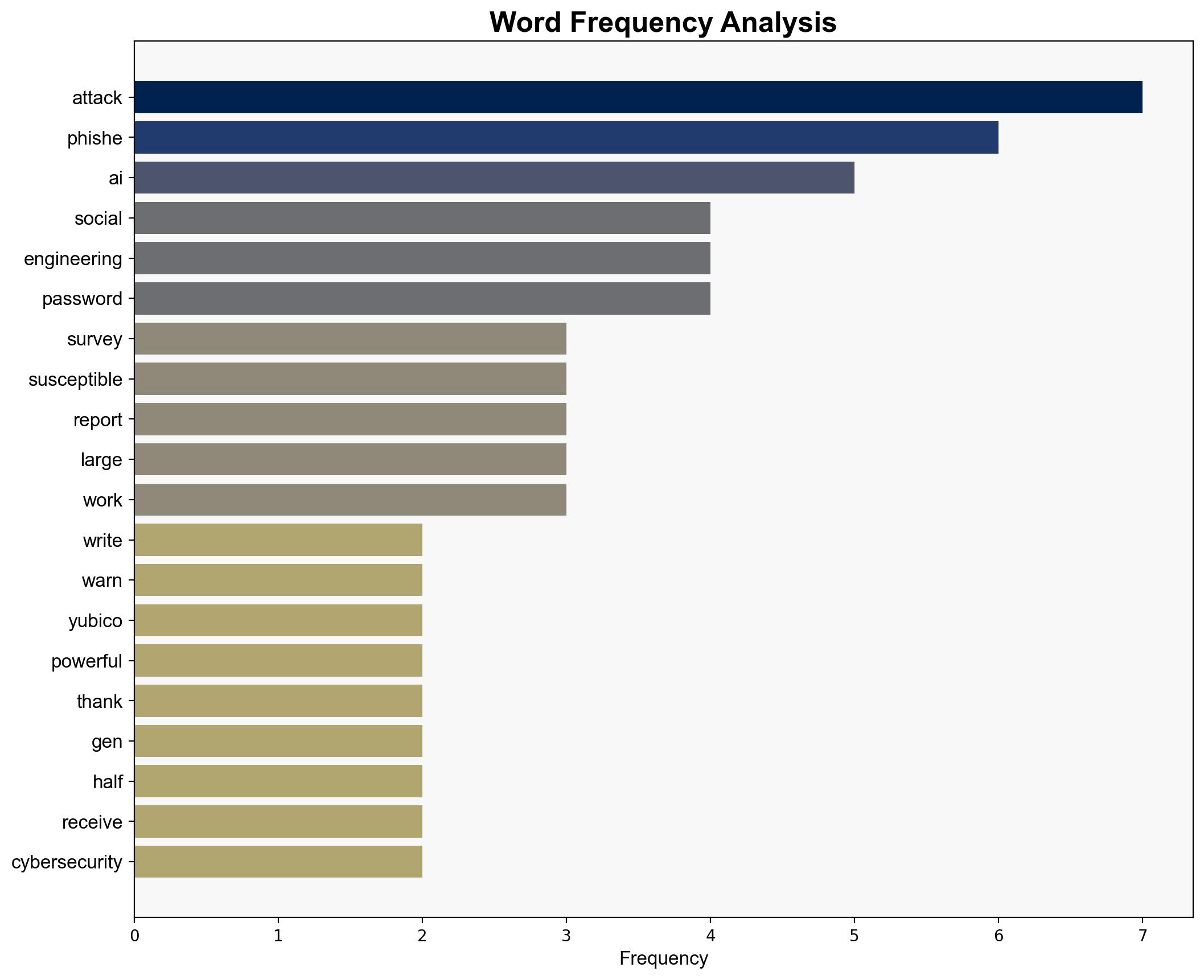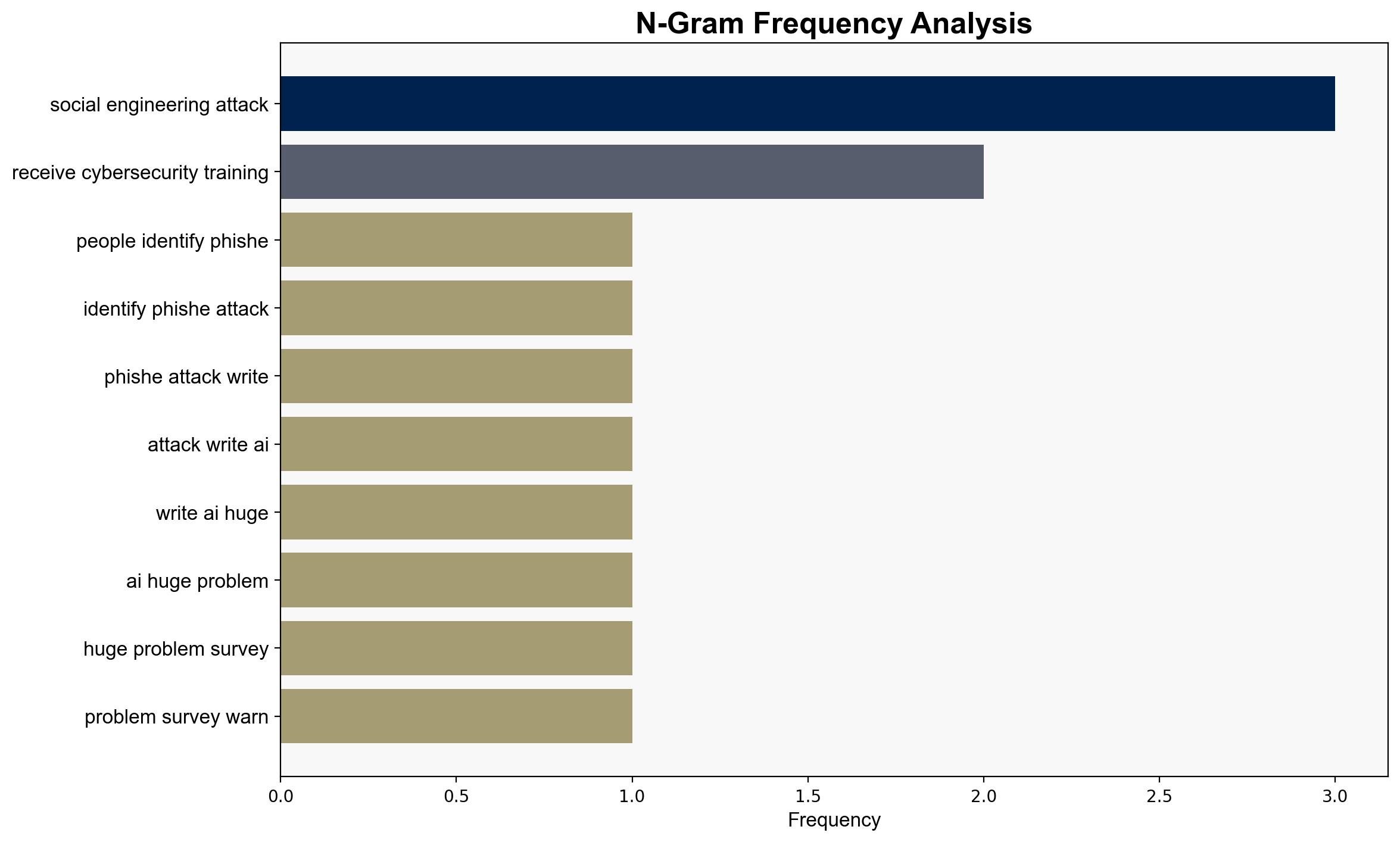Most people still cant identify a phishing attack written by AI – and that’s a huge problem survey warns – TechRadar
Published on: 2025-09-30
Intelligence Report: Most people still can’t identify a phishing attack written by AI – and that’s a huge problem survey warns – TechRadar
1. BLUF (Bottom Line Up Front)
The strategic judgment indicates a high confidence level that AI-powered phishing attacks are becoming increasingly sophisticated and difficult to detect, posing a significant cybersecurity threat. The most supported hypothesis is that the lack of adequate cybersecurity training and reliance on outdated security measures are exacerbating vulnerabilities. It is recommended to enhance cybersecurity training and implement advanced security protocols such as multi-factor authentication (MFA).
2. Competing Hypotheses
1. **Hypothesis A**: The rise in AI-powered phishing attacks is primarily due to the technological advancement of AI, making attacks more convincing and harder to detect.
2. **Hypothesis B**: The increase in successful phishing attacks is largely due to inadequate cybersecurity training and the failure to adopt advanced security measures, rather than the sophistication of AI technology itself.
Using the Analysis of Competing Hypotheses (ACH) 2.0, Hypothesis B is better supported. The survey highlights a significant portion of the workforce lacking cybersecurity training and the prevalent use of basic password authentication, indicating systemic vulnerabilities rather than purely technological advancements.
3. Key Assumptions and Red Flags
– **Assumptions**: It is assumed that AI is the primary driver of increased phishing attack success rates. Another assumption is that cybersecurity training directly correlates with reduced susceptibility to phishing.
– **Red Flags**: The survey data may not represent the entire demographic accurately, and there is a potential bias in self-reported cybersecurity training effectiveness. The lack of detailed data on the nature of AI advancements in phishing is a blind spot.
4. Implications and Strategic Risks
The increasing sophistication of AI-powered phishing attacks poses significant risks to both individual and organizational cybersecurity. There is a potential for cascading threats if organizations do not update their security measures, leading to increased data breaches and financial losses. The psychological impact of deepfake and voice cloning technologies could further erode trust in digital communications.
5. Recommendations and Outlook
- Implement comprehensive cybersecurity training programs across all organizational levels.
- Adopt advanced security measures such as multi-factor authentication and AI-based threat detection systems.
- Scenario-based Projections:
- **Best Case**: Organizations rapidly adopt advanced security protocols, significantly reducing successful phishing attacks.
- **Worst Case**: Continued reliance on outdated security measures leads to widespread data breaches and financial losses.
- **Most Likely**: A gradual improvement in cybersecurity practices, with intermittent successful phishing attacks as organizations adapt.
6. Key Individuals and Entities
Yubico (as the source of the survey data), TechRadar (as the reporting entity).
7. Thematic Tags
national security threats, cybersecurity, counter-terrorism, regional focus





